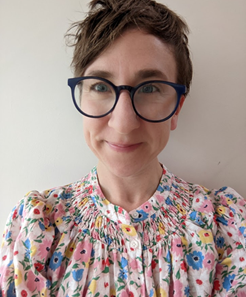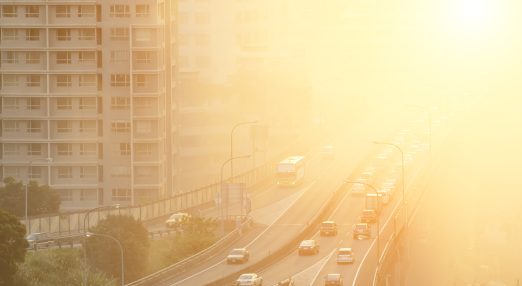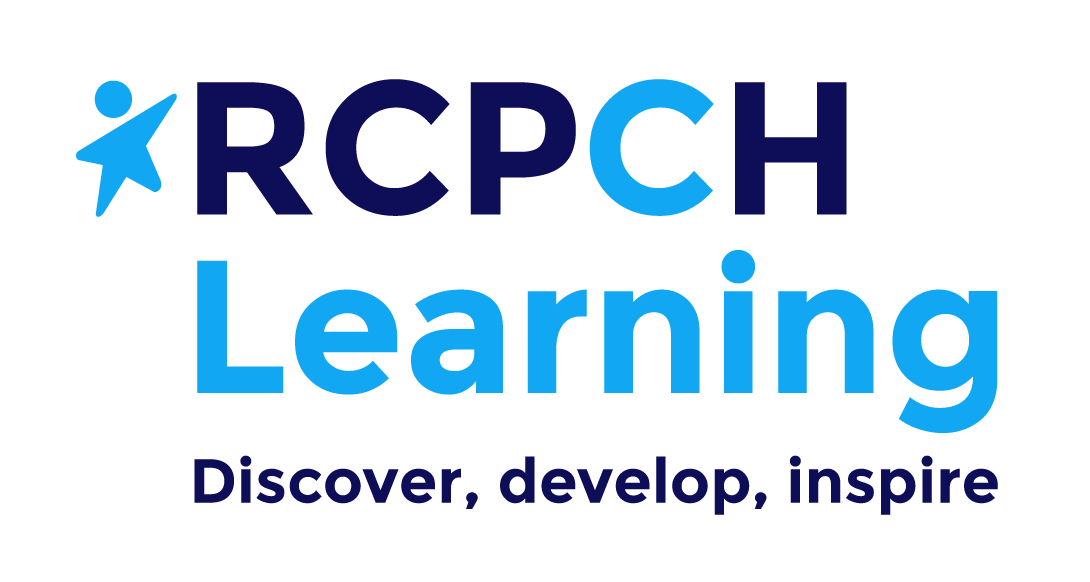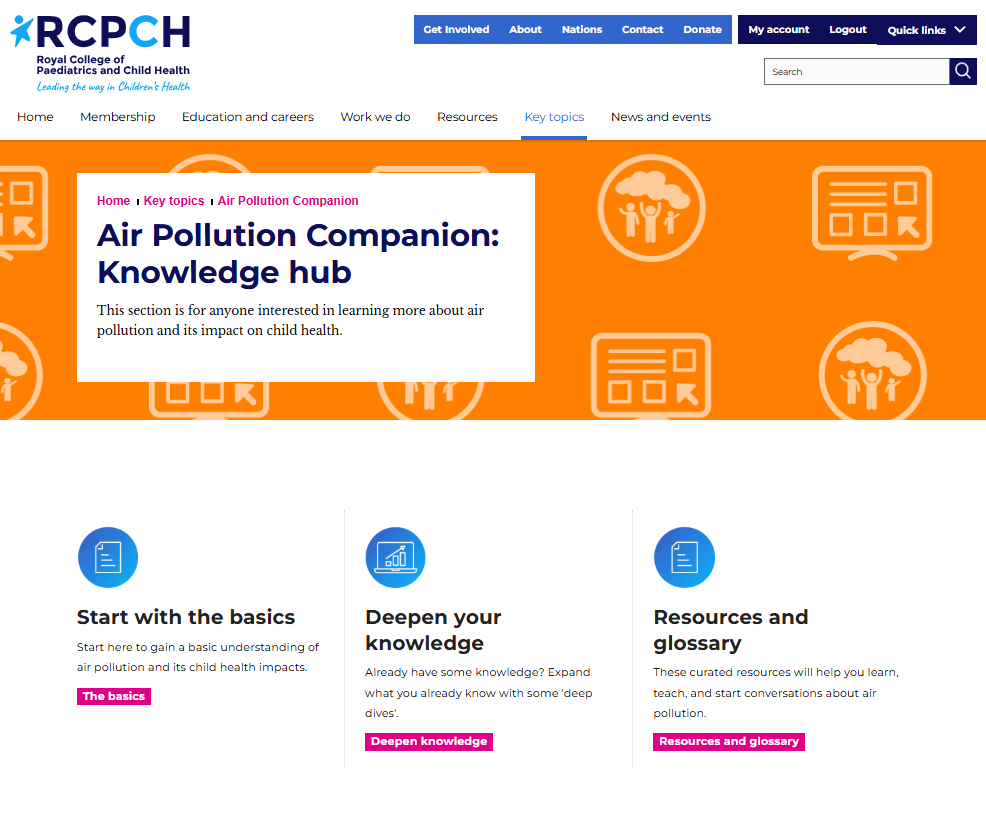Length
15 - 30 minutes
Target Audiences
- All patient facing child health professionals
Self Paced
Work through the module at your own pace.When you have completed the module, you can return at any time to re-review any of the sections.
Free
Log in with your account
|
Welcome to the ‘Talking to patients about air pollution – simulated conversations’ resource.
This resource has been created by the RCPCH in collaboration with Great Ormond Street Hospital (GOSH) and Camden Council.
Air pollution is the 2nd biggest risk factor for death globally. It is associated with multi system pathology across the life course – this includes respiratory and cardiovascular systems as well as mental health. There are actions that patients can take to protect themselves, and the 2021 Coroner’s report following Ella Kissi-Debrah’s death due to air pollution highlighted the need for clinicians to discuss air pollution risks with patients and parents. Despite this, many clinicians report lacking the knowledge and confidence to have these conversations. We hope these four short videos will empower child health professionals to incorporate air pollution discussions into their daily practice.
Filmed at the Great Ormond Street Hospital Simulation Suite, these videos feature practising clinicians and patients who generously volunteered their time. We are hugely grateful for their enthusiasm and contributions to this project.
On this page, you’ll find the simulation videos for you to watch, reflect and act on. To further support you, we have included detailed patient FAQs (including a downloadable copy) and listed a number of useful resources. If you need help navigating the page see the How to use this page section
Below is an introduction to the resource by Tom Parkes, Air Quality Programme Manager at Camden Council.
|
|
This Talking to patients about air pollution – simulated conversations page has 7 steps:
Step 1 ) Pre course information – setting the scene
Steps 2-5 ) Videos of simulated conversations
Step 6) Useful resources
Step 7) Post-course evaluation form
Once you have completed each section, click the ‘Mark complete‘ button.
Next, complete and submit the post-course evaluation form, and click the ‘Mark complete‘ button
Once all steps have been completed, a downloadable certificate of completion will be issued at the top of this page.
If you need help logging in, please visit our Help using RCPCH Learning page
If you have any questions, please contact the RCPCH Learning team
|
- Air pollution’ means gases, particles and chemicals in the air that can damage our health if we inhale them. When we talk about ‘air pollution’ in a local context, or as a health risk, we’re not referring to carbon dioxide or greenhouse gases as these usually do not directly affect our health.
- ‘Air quality’ is a measure of whether the air we breathe is safe or whether it has too much air pollution. ‘Poor air quality’ means there is too much air pollution.
- The main air pollutants that we focus on for their health risks are:
-
- nitrogen dioxide (NO2), which is a gas formed when we burn fossil fuels for heating or in engines.
- particulate matter (PM), which means airborne particles that are small enough for us to inhale them. Sometimes written with a number, e.g. PM10 and PM5. The smaller the number, the smaller the particle and the deeper it can reach in our bodies.
- ozone (O3), which is a good thing high up in the atmosphere where it protects us from UV radiation, but is harmful for our health at ground level.
- volatile organic compounds (VOCs), which is a term for airborne chemicals, some of which can affect our health (like formaldehyde).
- Indoors: Cooking, wood burners, fireplaces, candles, incense, chemical cleaning products, scented room sprays, personal care products, smoking, and vaping.
- Outdoors: Road transport, restaurants and kitchens, building heating, construction sites, diesel trains, garden fires (bonfires), fireworks.
- Pollution is breathed into our lungs and the smallest particles can cross into the bloodstream. From here they can travel to all our organs (including the heart and brain) where they cause inflammation. They can also cross the placenta affecting developing babies.
- If we spend time in a place with high levels of air pollution, we might feel some immediate effects such as a tightness of the chest or a wheeze. People who already have health conditions like asthma might feel more affected. Even if we are generally healthy and don’t notice it, air pollution can still be affecting our health.
- Over the long term, air pollution can cause asthma and other illnesses and increases the risk of chronic diseases including lung and heart conditions, diabetes, neurological conditions, and cancer.
- Children and older people are more vulnerable to air pollution because their bodies are less able to tolerate the inflammation that it causes. Children’s lungs and brains are still developing, they breathe more quickly and can inhale more air pollution relative to their body weight. Lots of exposure to air pollution early in life can cause a long-term impact on lung function and development.
We can try to avoid polluted environments or reduce the amount of time we spend in them
- Busy roads – if we walk or cycle, perhaps there is an alternative route that has less traffic? Maybe we could try walking on the side of the road with fewer vehicles? Is it possible walk on the pavement farthest from the road? When we wait at lights or bus stops, can we stand farther away from the road or idling vehicles?
- Construction sites.
- Restaurants, street food markets and other commercial cooking.
- Train stations with diesel trains.
We might be able to change how we travel
- If we can walk, cycle or travel actively we will benefit from the physical exercise this brings, even if we travel along a polluted route. If we travelled in a car along the same roads, we would most likely be breathing in more of this pollution, but would not be benefitting from the exercise.
- There are some other small actions that can help to reduce our exposure to air pollution by reducing our contribution to it. For example, never idling a vehicle’s engine whilst parked or stationary at the side of the road. This produces air pollution, carbon emissions, and wastes fuel and money.
- Listening to our bodies is important, and we can also check a pollution forecast (like UK-AIR) – but it’s important to remember that these are not perfect.
- Some weather apps and exercise tracking apps now incorporate information about air pollution and some of them might be able to suggest travel routes that are expected to have lower levels of air pollution. Again, these are based on predictions and are not perfect; use your judgement and intuition. If you smell woodsmoke from chimneys, smoke from garden bonfires, or the smell of grilled food or smoke from cooking, you are breathing in air pollution from those activities.
- We should understand that breathing in lots of air pollution can pose a risk for our health, now and in the future. Think about the environments where we are exposed to high levels of air pollution and try to avoid those or reduce the amount of time we spend there.
- Think about the simple ways we can reduce the amount of pollution in our homes, workplaces, and in schools and learning environments.
- Air pollution is not a new thing, we just know a lot more about it now. Outdoor air quality is much better than five or ten years ago.
- Don’t think of air pollution like a new threat to your health for you to worry about. Instead, think about how your new knowledge about air pollution means you may be able to make informed choices or change your activities slightly to reduce your exposure in a way that can help to ensure you live healthier for longer.
- You can also use your knowledge to protect and support your family, people you care for, and others too. Many people are not aware of air pollution and anything they learn can help them to protect their health.
- As with outdoors, indoor air pollution is not a new phenomenon, but it is something we should think about and take action to avoid where possible.
- There are things we can do to reduce the sources of air pollution indoors – in our homes especially, but also in workplaces and in schools and educational environments.
- There are also things we can do to more effectively remove air pollution from indoor environments and to prevent air pollutants from accumulating. Mainly this is through ventilation.
- Our increasing usage of chemical products does mean that airborne chemicals (volatile organic compounds; VOCs) are more common in our homes now than in the past, but there are often things we can do to reduce exposure to VOCs:
-
- adjusting our choice of cleaning products (selecting unscented products and liquid or gel cleaners rather than sprays)
- avoiding scented room sprays and scented candles
- choosing low-VOC decorative materials and furnishings (like ‘minimal-VOC’ and ‘low-VOC’ paint)
- There are three main ways:
-
- If we use a gas hob or oven this produces nitrogen dioxide (NO2) and particulate matter (PM). Charcoal grills and wood pizza ovens produce PM.
- When we heat oily or fatty foods, some of these oils become airborne and form particulate matter (PM) and volatile organic compounds (VOCs).
- When we burn food particulate matter (PM) is formed.
- When we cook with gas indoors, levels of air pollution indoors can build up to levels similar to a high-traffic roadside environment if we do not ventilate.
- Opening a window for ventilation, if you have an openable window in your kitchen.
- Using an extractor fan if you have one.
- Closing doors between kitchens and living spaces and bedrooms.
- Using cooking oils that are suitable for the style of cooking, for example, making sure to use an oil that doesn’t smoke or burn at high temperatures.
- Taking care to avoid burning food, as this produces air pollution.
- Make sure you have a carbon monoxide alarm in your kitchen if you have any gas appliances.
- It’s not a type of air pollution (because that usually refers to chemicals and non-biological particles) but it is still harmful for health.
- Exposure to damp and mould may be responsible for the onset or worsening of asthma symptoms. Severe cases of damp and mould in the home can be very dangerous if not treated.
- Some of the actions to reduce indoor air pollution can also help to reduce damp and mould. Ventilation is particularly important, especially after activities that produce water vapour, such as boiling a kettle, cooking, showering or bathing and drying clothes indoors.
- It might not be possible for an occupant to prevent damp and mould in their home. In some cases, homes are not maintained properly by landlords, and this can lead to leaks and water penetration or inadequate ventilation. For some households, the cost of heating a home can be prohibitively expensive and this might make it more difficult to ventilate (which can let warmth out, and cold in). it can be easier for damp and mould to form in cold rooms.
- There may be some circumstances where landlords and housing providers should take action to tackle problems that tenants cannot control. All people have a legal right to be able to live in safe housing.
- Yes. Burning wood, wood products and derivatives, and other types of solid fuels (like coal, coffee logs etc.) unavoidably produces air pollution. Using wood for heating releases much more health-damaging particulate matter (PM) air pollution compared to gas or electric heating.
- Even the most efficient, modern wood-burning appliances and kiln-dried wood fuels release a considerable amount of air pollution. Although some fuels are marketed as ‘smokeless’, they still release a lot of air pollution when burned.
- Air pollution is created when burning wood and solid fuels, even if we cannot see any visible smoke.
- There is limited evidence about the effectiveness of masks in preventing the inhalation of air pollution. Some of them might be able to capture some larger particles (particulate matter air pollution) but might not filter smaller particles or gases like nitrogen dioxide (NO2).
- If you do purchase a mask, make sure it fits very closely to your face with no gaps, and choose one that meets an established standard for filtration (such as N95, KN95 or FFP2, for example).
- It depends. Air purifiers can help in some circumstances, but it depends a lot on whether they have effective filters for the different types of pollutants that can affect our health. Some of them release ozone (O3) air pollution so they might be removing one type of pollution but releasing another.
- Air purifiers can be expensive to purchase and to run. They may require filter changes and maintenance.
- It is better to try to tackle the sources of pollution and to use other methods to remove pollutants, such as natural ventilation, rather than relying on air purifiers.
- EVs have lower carbon emissions and produce less air pollution than petrol and diesel vehicles as they do not have tailpipe emissions.
- However, all vehicles – including EVs – release particulate matter (PM) air pollution from the friction between tyres and the road surface and between the wheels and the brakes.
- EVs are typically quite expensive and therefore not a viable option for everybody.
- Overall, EVs are better for climate and for local air quality when used for essential trips, when compared to petrol and diesel. However, it is much better for the environment and for public health if we can use active transport or public transport whenever possible.
|
|

Dr Alice Willson
Clinical Fellow - Clean Air Fund Partnership
Alice is a senior Paediatric Registrar in the North West of England, and a RCPCH Clinical Fellow with the Clean Air Fund partnership. Alice has lots of experience talking to patients, holds a PGCE in medical education and instructs on various courses (APLS/NLS). She has a particular interest in population and respiratory health, having completed the HEE Population Health fellowship 2022/23. She strongly believes in the transformative power of good communication and co-production of solutions with patients.

Tom Parkes
Air Quality Programme Manager for Camden Council
Tom is the Air Quality Programme Manager for Camden – the first local authority to adopt the World Health Organization air quality standards. Tom leads Camden’s ambitious air quality programme, which is focused on realising the community vision for a borough where no person becomes ill because of the air they breathe. In addition to implementing a range of projects to tackle the sources of air pollution and reduce exposure throughout the borough, Camden is also committed to establishing strong links with the health sector. By collaborating with the RCPCH, GOSH and other local institutions, Tom hopes to be able to better integrate environmental information into clinical pathways and health screening, with the ambition of reducing the health burden imposed by air pollution in London.

Charlotte Adams
Sustainability Delivery Project Manager at GOSH
Charlotte is the Sustainability Delivery Project Manager at GOSH - the first hospital to adopt the Clean Air Hospital Framework and integrate air quality postcode data into patient records. Charlotte works closely with the education team at GOSH to raise clinical awareness around air pollution and its intrinsic links with health outcomes. Prior to working at GOSH, Charlotte lead Air Quality work within local authority.
|
This project would not have been possible without numerous individuals and groups who fed into it.
Thanks to Nicola Wilson (Sustainability Education Lead and Programme Manager, GOSH) for the concept and original scripts.
Thanks to those who reviewed and advised on script development: Rose Dolan (Young People Forum, GOSH), Dr Michelle Peter and Agnes Agyepong (Global Black Maternal Health) and Gareth Drake (Clinical Psychologist, GOSH).
Thanks to our clinicians Anna, Jemma, Nahima and Nicola, and to our patients Cat and Robin, Noor, Lewis and Angela – we couldn’t have done it without you!
|
As of 1st September 2016 the Revalidation and CPD team of the Royal College of Paediatrics and Child Health no longer allocates a number CPD credits to courses or events. The removal of credits associated with events allows delegates to record the educational benefit of the activity through written reflection, in contrast to quantifying the significance based on the time duration of the course. This is in accordance with changes made to the CPD Scheme guidelines published in April 2016.
Detailed information and scheme guidance can be found on the RCPCH website
When recording the activity, users should focus on the reflection and detail the following:
- What did you learn?
- What effect has/will the learning had/have on your current practice?
- What further learning or action, if any, is needed as a result of the original learning activity?
Should you have any questions regarding the removal of credits or how you should record this activity, please feel free to contact the CPD team
If you use the RCPCH CPD Diary, you can click here to visit the diary and record your learning: Log your learning on the RCPCH CPD Diary
|
-

RCPCH & Hope for the Future Webinar: Developing relationships with politicians to promote clean air for child health
In this webinar, hosted jointly by RCPCH and democratic engagement experts Hope for the Future, you will learn how to approach your elected representatives about air pollution with the aim of promoting positive action.

The Air We Breathe: Global Impacts of Air Pollution on Children’s Health
In this webinar, Pallavi Pant, Head of Global Health at the Health Effects Institute, explored the urgent issue of air pollution and its significant impact on children's health worldwide.

RCPCH Webinar: Air Pollution and Child Health Advocacy
In this webinar, Dr Helena Clements, RCPCH Officer for Climate Change, in conversation with Dr Camilla Kingdon, former RCPCH President and chair of the Health Air Coalition as they delve into air pollution and child health advocacy, drawing from their expertise and personal journeys.

RCPCH Webinar: Upskilling child health professionals to talk about air pollution
In this webinar, we join the RCPCH’s Clean Air Fund Partnership team to explore the barriers to talking to children, young people and their families about air pollution, and to learn how clinicians can overcome them.
Found an issue? Please get in touch with us:
Email us at rcpchlearning@rcpch.ac.uk

